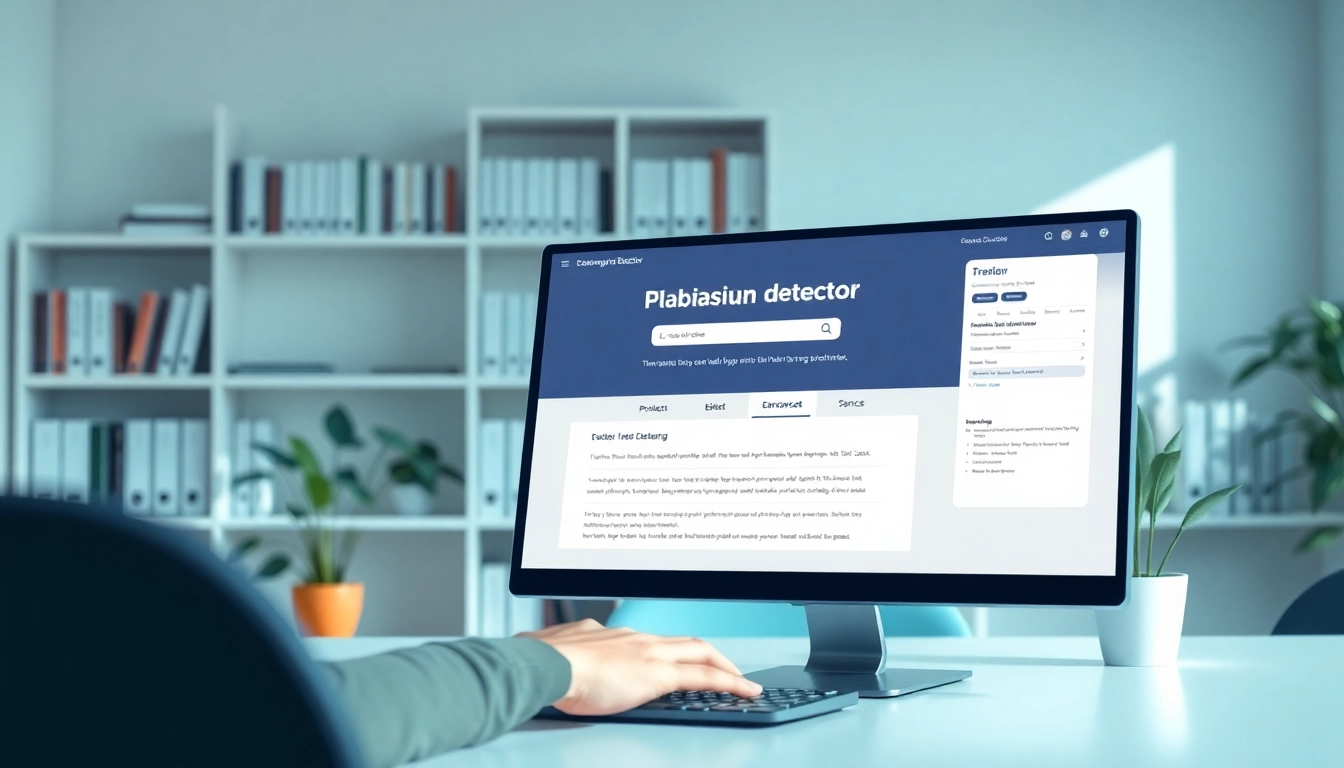
Understanding Plagiarism: Importance and Types
What is Plagiarism?
Plagiarism is the act of using someone else’s work, ideas, or expressions without proper acknowledgment, thereby presenting them as one’s own. This can include copying text, paraphrasing without credit, or even reusing one’s own previously published work without citation (known as self-plagiarism). The consequences of plagiarism can range from minor penalties, such as loss of reputation, to severe outcomes, including legal action or expulsion from academic institutions.
Types of Plagiarism
Understanding the various forms of plagiarism is crucial for anyone involved in writing or content creation. Here are the most common types:
- Direct Plagiarism: Copying someone else’s work word for word without attribution.
- Self-Plagiarism: Reusing one’s own previously published works without acknowledgment.
- Patchwork Plagiarism: Combining phrases and ideas from multiple sources and presenting them as original without proper citation.
- Accidental Plagiarism: Failing to cite sources properly or misquoting in a manner that leads to an unintentional theft of ideas.
- Paraphrasing Plagiarism: Rephrasing someone else’s ideas without giving due credit.
Consequences of Academic Dishonesty
The ramifications of plagiarism can be severe, especially in an academic setting. Academic dishonesty not only undermines the integrity of the educational system but also affects the individuals involved. Consequences may include:
- Failing grades on assignments or entire courses
- Disciplinary action from institutions, including suspension or expulsion
- Legal repercussions if intellectual property rights are violated
- Long-term damage to a student’s academic and professional reputation
Overview of Plagiarism Detectors
How Plagiarism Detectors Work
A plagiarism detector is a specialized software tool that scans a given text against various online databases, academic publications, and existing web content to identify similarities. These tools employ sophisticated algorithms and comparisons to highlight areas that might indicate plagiarism. Typically, the process involves:
- Inputting the document into the software.
- The tool scans the text and compares it with its extensive databases.
- It generates a report that outlines the degree of similarity found, highlighting potentially plagiarized sections and suggesting appropriate citations.
Key Features to Look For
Not all plagiarism detectors are created equal. When selecting a tool, consider the following essential features:
- Accuracy: The tool should accurately identify duplicates with a minimal number of false positives.
- Database Size: A larger database often leads to better results as it covers more sources.
- User-Friendliness: An intuitive interface facilitates ease of use, making it accessible for users at all levels of expertise.
- Reporting Capabilities: Detailed reports that effectively outline plagiarism instances are crucial for further analysis and corrections.
- Multiple File Formats: Support for various document formats allows flexibility in uploading and checking files.
Common Pitfalls to Avoid
While using plagiarism detectors can help maintain academic integrity, there are several pitfalls users should be aware of:
- Over reliance on Software: While effective, these tools should not substitute for proper citation practices.
- Ignoring Threshold Settings: Some tools allow users to set thresholds for how closely content can match; overly strict settings can return false positives.
- Not Regularly Updating Tools: Plagiarism software must be updated to keep pace with new publications and web content.
Top Plagiarism Detectors on the Market
Comparing Free and Paid Tools
When considering a plagiarism detector, users can choose between free and paid tools. Free tools often offer limited functionality and may lack comprehensive databases. Some of the most well-known tools include:
- Grammarly: Alongside grammar checking, Grammarly offers a robust plagiarism detection feature, suitable for essays and academic papers.
- Turnitin: Widely used in educational institutions, it has a rich database and excellent tracking capabilities but typically requires institutional subscriptions.
- PapersOwl: This AI-powered tool offers a free plagiarism check with a clean user interface.
- DupliChecker: Provides basic services without any cost but has limits on word count for free checks.
User Reviews and Testimonials
User feedback plays a crucial role in selecting the right plagiarism detector. Many users praise tools like Grammarly for their accuracy and ease of use, while others appreciate Turnitin for its depth and comprehensive reports. However, some common concerns include:
- Accessibility issues in terms of pricing for some of the paid tools.
- False positive reports from free tools can be misleading.
Feature Comparison Table
| Feature | Grammarly | Turnitin | PapersOwl | DupliChecker |
|---|---|---|---|---|
| Free Version | Limited | No | Yes | Yes |
| Database Size | Extensive | Comprehensive | Moderate | Limited |
| User-friendly Interface | Yes | Somewhat | Yes | Yes |
| Report Detail | Moderate | Very Detailed | Basic | Basic |
| Subscription Cost | Paid | Institutional | Free | Free with limits |
Utilizing Plagiarism Detectors Effectively
Step-by-Step Guide to Running a Check
Successfully utilizing a plagiarism detector involves a straightforward process. Here’s a step-by-step guide to running a check effectively:
- Select the appropriate plagiarism detector.
- Create or login to your user account if required.
- Upload or copy-paste the text you wish to check.
- Choose any additional settings if available, such as excluding quotes or citations.
- Initiate the scan and wait for the report to generate.
- Review the results thoroughly, paying special attention to highlighted sections and recommendations.
- Make necessary corrections and ensure that all sources are properly cited.
Interpreting Results
Interpreting the results from a plagiarism detector is crucial for understanding potential issues. Look for the following:
- Percentage of Similarity: This indicates how much of your text matches existing content. A high percentage could trigger academic penalties.
- Highlighted Text: Sections of your text that match existing sources will be highlighted. Ensure you assess whether citations are needed.
- Source Listings: Check the sources listed in the report. Valid references should be acknowledged in your work.
Integrating Tool into Your Workflow
To maximize the benefits of plagiarism detection, integrating the tool into your writing process is essential. Here’s how:
- Run a plagiarism check after completing your first draft.
- Use the feedback from the tool to refine your writing and ensure proper citations before submission.
- Regularly schedule checks for ongoing projects to maintain integrity throughout your work.
Future Trends in Plagiarism Detection
The Role of AI in Plagiarism Detection
The future of plagiarism detection is undoubtedly impacted by advancements in artificial intelligence. AI technologies allow for greater accuracy and speed in detecting nuances in writing style and content originality. Predictive text analysis may serve as a predictive way to maintain originality by warning users of potential plagiarism before it becomes an issue.
Innovative Features on the Horizon
Future plagiarism detectors may include features such as:
- Advanced Semantic Analysis: Rather than simply match text, future tools can understand context and meaning, significantly reducing false positives.
- Integration with Education Platforms: Seamless integration with learning management systems (LMS) for easier content checks in educational settings.
- Real-time Editing Assistance: Suggestions for paraphrasing or alternative phrasing to encourage original work.
Maintaining Ethical Standards in Writing
As technology advances, the responsibility of maintaining ethical standards in writing also increases. Writers must not only depend on technology but must also cultivate good research habits, understand copyright laws, and respect intellectual property. Understanding the importance of ethical writing will ultimately contribute to a culture of integrity in academics, journalism, and beyond.







